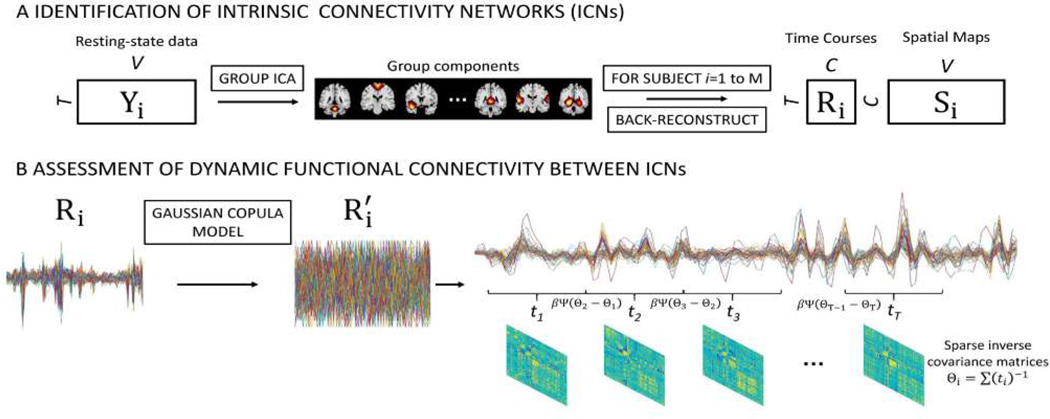Fig. 1.
An illustration of the GICA-TVGL framework. (A) Group ICA (GICA) decomposes resting-state fMRI data into components. 50 of them are identified as intrinsic connectivity networks (ICNs). GICA1 back reconstruction is used to estimate the spatial maps (SMs, ) and time courses (TCs, ) for each subject. (B) Following the GICA analysis, time courses (TCs) are transformed by the Gaussian copula model into for each item. Then, dynamic functional connectivity is assessed through the TVGL model.

